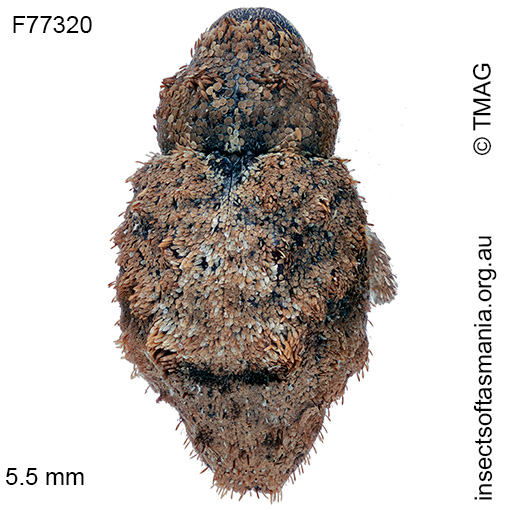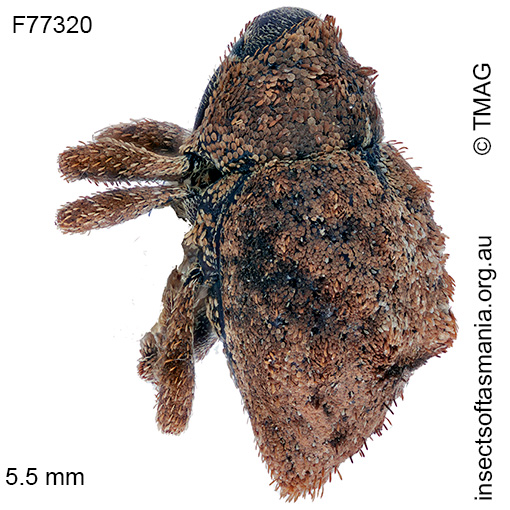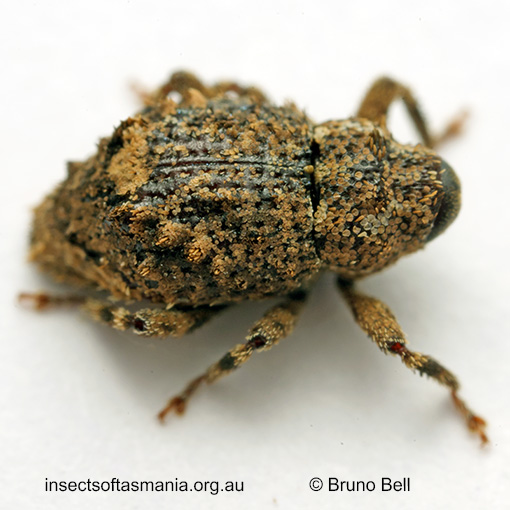
Tapinocis scutellaris (a species of weevil)
Basis for Tasmanian occurrence
Semmens, T.D., McQuillan, P.B. & Hayhurst, G. (1992). Catalogue of the Insects of Tasmania. Government of Tasmania: Department of Primary Industry, 104 pp.
TMAG collections
Classification
Order: Coleoptera
Suborder: Polyphaga
Superfamily: Curculionoidea
Family: Curculionidae
Subfamily: Molytinae
Tribe: Cryptorhynchini
Morphology
Typical length (mm): 5.5
Flightedness: winged and assumed capable of flight
Source literature on morphology and taxonomy (*primary taxonomic source, where identified):
Lea, A.M. (1913a). Descriptions of Australian Curculionidae, with notes on previously described species. Part X1. Trans. Roy. Soc. S. Aust. 37: 301-445.
Ecology
Assumed larval feeding: (not yet documented)
Association with dead wood or old trees: obligately saproxylic
Ecological attributes: — May occupy logs or trunks of Eucalyptus obliqua, at least temporarily, since found having emerged within six years of felling (Grove et al., 2009).
Collection method(s) for TMAG material: — Beating foliage of Dicksonia antarctica (Jones, 2007) — Emergence trapping from log of Eucalyptus obliqua — Knockdown fogging of canopy of Nothofagus cunninghamii — Malaise trapping — Pitfall trapping — Rearing in insectary (host not documented).
Source ecological literature:
Grove, S.J. (2009b). Beetles and fuelwood harvesting: a retrospective study from Tasmania’s southern forests. Tasforests 18: 77-99.
Grove, S. et al. (2009). A long-term experimental study of saproxylic beetle … succession in Tasmanian Eucalyptus … logs… In: Fattorini, S. (Ed.), Insect Ecology and Conservation. Research Signpost, pp. 71-114.
Yee, M. (2005). The ecology and habitat requirements of saproxylic beetles native to Tasmanian wet eucalypt forests: potential impacts of commercial forestry practices. PhD thesis, Univ. of Tasmania, Hobart.




